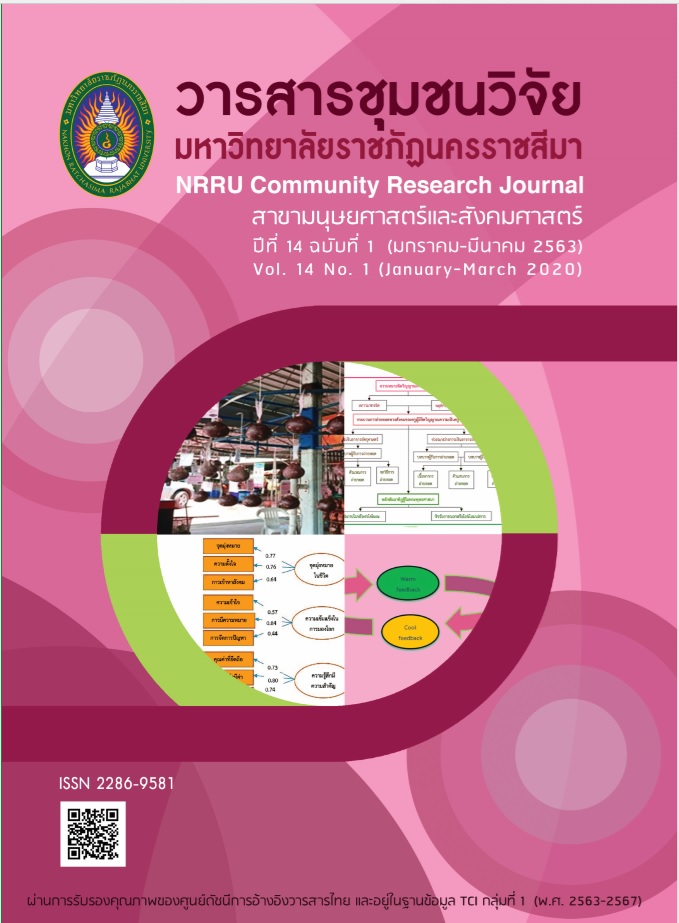เปรียบเทียบการจัดสรรงบประมาณรายจ่ายระหว่างก่อนและหลังการรัฐประหาร ปี พ.ศ. 2557
DOI:
https://doi.org/10.14456/nrru-rdi.2020.17Keywords:
Budget allocation comparison, Public policy, Coup d’étatAbstract
This research aims to compare the budget allocation between pre-military coup d’état and post-military coup d’état 2014 in Thailand. It is important to state that sources of the governmental administrative power in two periods, which are as well as the differences in policy formation perspectives. This research plans to explore how budget allocation between two political periods looks like, how the similarities or differences are. If it is different, how budget allocation responds to policy goal in each government is. This research collects data form, document reports and used vontent analysis research technique to make the replicable and valid inferences. This research employed the phenomenology approach to investigate the differences and similarities in budget allocation by focusing on four government policy domains: public health, infrastructure, military and state security, and social welfare. The data were analyzed by using content analysis process.
The study found that government budget allocation in pre- and post-militaries regime were mixed. They similarly focused on the populist policy especially infrastructure and social welfare policy. The budgets were mostly allocated in these two policy domains. Moreover, the differences in the post-military coup d’état were reported. The military and state security policies were the main investment in the post-coup d’état government.
References
BBC News. (2017). Government spokesman confirmed Cabinet approved submarine purchase. Retrieved April 24, 2017, from https://www.bbc.com/thai/thailand-39694976 (In Thai)
_______. (2017). Open a project to buy weapons in the NCPO era that many people may not know. Retrieved April 26, 2017, from https://www.bbc.com/thai/thailand-39716273 (In Thai)
Buracom, P. (2015). Public Expenditure Analysis. Bangkok : S&G. (In Thai)
Joyce, P. G., & Pattison, S. (2010). Public budgeting in 2020: return to equilibrium, or continued mismatch between demands and resources. Public Administration Review, 70(1). Retrieved February 25, 2018, from https://onlinelibrary.wiley.com/doi/abs/10.1111/j.1540-6210.2010.02243.x
Siripraphanukun, P. (2013). Analysis of law to promote financial and fiscal discipline (Proposal on Finance and Financial Discipline Bill). Retrieved February 25, 2018, from https://tdri. or.th/2013/08/tlw_fiscaldiscipline-2/ (In Thai)
Sujjapanroj, W. (2007). Pollical economy of Thailand's budget allocation between 1961-2006. Thesis, Master of Arts degree in Political Economy, Faculty of Economics, Chulalongkorn University, Bangkok. (In Thai)
Suwanmala, C. (2003). Budget system and successful management in the public sector: the relationship between the state and modern citizens. Bangkok : Thanatat Printing. (In Thai)
Thai PBS News. (2018y). "Toon Body Slam" hands a donation to the project "One step at a step" to 11 hospitals. Retrieved February 25, 2018, from https://news.thaipbs.or.th/ content/270552 (In Thai)
Thairath Online News. (2016). Opening the budget for the rental of the 'Big Pom' team, flying over the sky to Hawaii with a budget of over 20 million. Retrieved October 2, 2016, from https://www.thairath.co.th/content/741276 (In Thai)
_______. (2018). 4 years in the NCPO to spend at least nearly 50 billion to buy weapons from the Great China. Retrieved June 13, 2018, from https://www.thairath.co.th/news/politic/ 1307027 (In Thai)
Trakansirin, P. (2005). Government Finance (2nd ed.). Bangkok : Kanungnit Printing. (In Thai)





